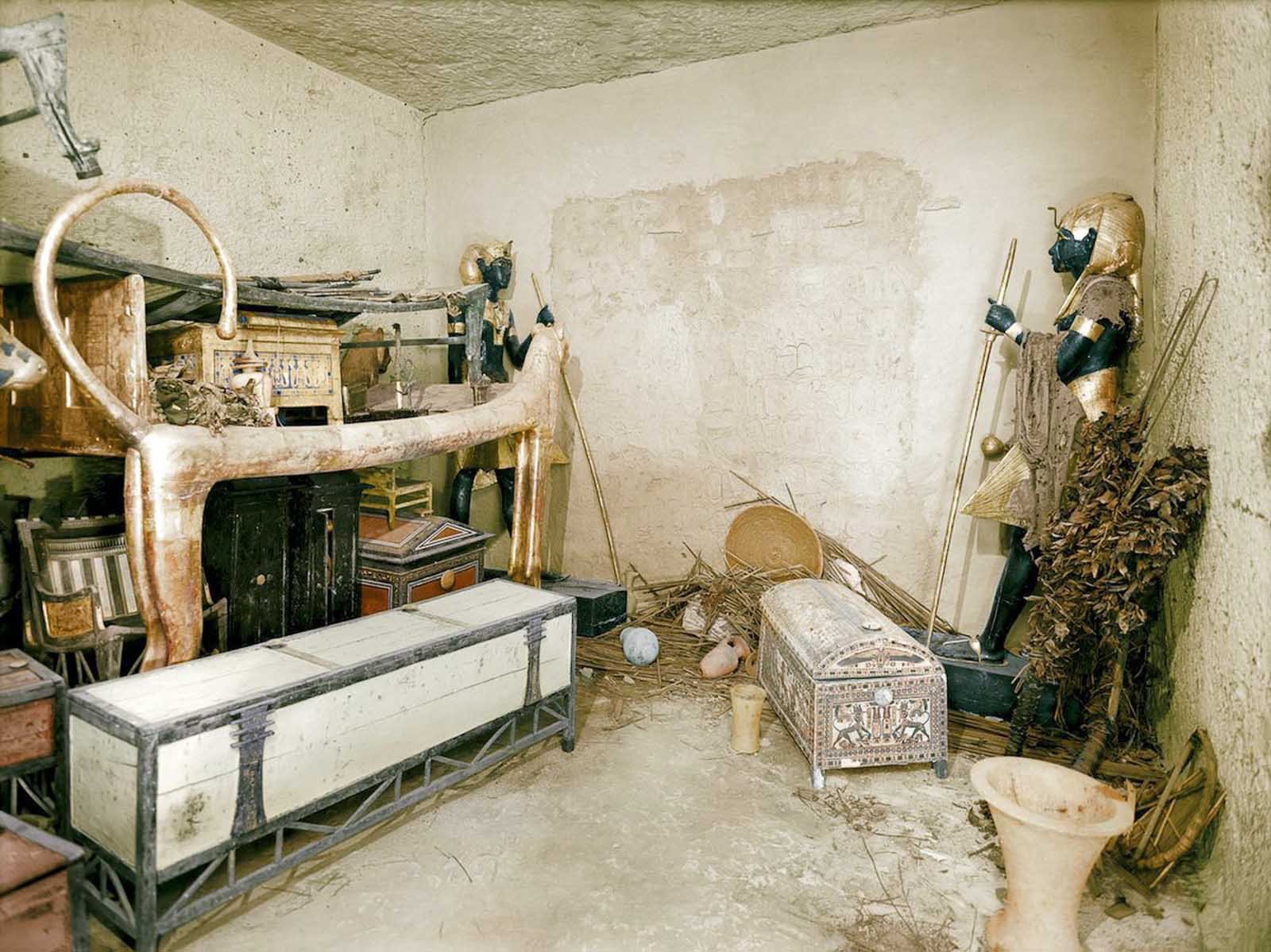Discovery of Tutankhamun’s Sarcophagus
By Milan Perera, 3rd Year English
Today on February 16, 1923, renowned British archaeologist Howard Carter discovers the Sarcophagus of Tutankhamun in the Valley of the Kings in Luxor, Egypt.
On a sweltering afternoon in November 1922, Howard Carter went down a series of steps that led to an ancient, sealed doorway bearing a royal emblem. The stone wall did not just separate him from the lost tomb of a pharaoh but from a sense of immortality accorded to rock stars and Hollywood A-listers. Howard Carter chipped a small hole in the wall using the chisel his grandmother gave him as a gift when he was just a teenager. After checking the presence of toxic gases, Carter peered through the opening with a candle in his hand. To his astonishment and delight, everywhere inside the chamber, wherever his eyes met, he saw glimpses of gleaming gold. Carter and his discovery read like a Dan Brown thriller and the subject of myths and legends over the next century.
Howard Carter was involved in excavations in Egypt since 1891 and had been under the tutelage of the renowned Egyptologist Sir Flinders Petrie for a while. His single-mindedness and methodical approach did not always serve him well, as he was involved in an altercation with a group of French tourists who were inebriated. The British authorities, not wanting to antagonise the French authorities, did not defend Carter when it appeared that Carter did not breach any written or unwritten etiquette except by being abrupt with the tourists. He was compelled to paint and make a living out of it but returning to excavation sites was never far from his thoughts. It was a most fortuitous change of fortunes for Carter when in 1907, he was introduced to the amateur Egyptology enthusiast with deep pockets, Lord Carnarvon.
The American financier and Egypt enthusiast Theodore M. Davis poured out his fortunes for the excavations in the Valley of the Kings between 1902-1915, which led to the discovery of some 30 tombs famously stated, “I fear the Valley of the Tombs is now exhausted” and returned to America. But Carter knew deep down that there should be at least one more famous tomb and persuaded his financier, Lord Carnarvon, to purchase the permit to excavate the site. Despite his enormous wealth, Lord Carnarvon’s patience grew thin, and he decided to withdraw his sponsorship to Carter in 1922. Not being deterred by the lack of progress in the Valley of the Kings, Carter pleaded with his patron to finance him for another year. What a crucial decision it turned out to be.
After the discovery of the little-known pharaoh in November 1922, Carter and his team diligently removed and catalogued objects from the tomb before he was able to reach the burial chamber. The highly anticipated event took place on February 16 1923, which The New York Times dubbed as “perhaps, the most extraordinary day in the whole history of Egyptian excavation.”
Among the kings and queens that reigned over Egypt, Tutankhamun’s reign is nothing but a footnote in Egyptian history which lasted only nine years until his untimely demise at the age of 19. The significance of the discovery of Tutankhamun’s tomb lies not in the great deeds of his reign but in his final resting place, which turned out to be a time capsule and a window to ancient Egypt as the tomb miraculously evaded the tomb raiders for the last 3000 years.
The sarcophagus of the boy pharaoh consisted of three shells, like a Russian doll. It provided a clear overview of the process of mummification and the techniques surrounding it. Among the 5000 objects found and catalogued in the tomb were golden shrines, jewellery, statues, a chariot, weapons and clothing of the finest refinement. The gilded murals on the wall provided a glimpse into the day-to-day life and beliefs of ancient Egypt.
It fired the imagination of filmmakers and fiction writers as never before. The cinema was making the tentative transition from vaudeville and silent movies, and the prospect of a mummy coming to life has been fascinating filmmakers from the 1920s to our own times.
The famous story of the curse has fascinated both academia and the general public alike. According to Professor Toby Wilkinson, the renowned Egyptologist, the story of the curse was planted by a disgruntled faction of the printed press. Lord Carnarvon, of his own volition, made an exclusive deal with the Times of London to cover the stories surrounding the tomb, which angered the press beyond measure. Events such as Carnarvon’s own death and some of those who worked at the site gave credence to the theory, which still never fails to capture the imagination of the public down the vista.
The discovery also revived the swashbuckling and daring-do of the British Empire, which felt battered and bruised after WWI. It boosted the morale of the British society as restorers of “Civilisation”.
Ironically in 1922, Egypt won their Independence from the British, who had been a British Protectorate since 1914. The discovery caused a surge of national pride in Egypt, and the content remained in Egypt despite the lengthy wrangling with colonial superpowers to be taken out of Egypt to be given the “proper care”.
The designs and patterns copied from the discovery provided a gleaming veneer to the Art Deco Movement, which incorporated its iconography, scarabs, pylons, and cornices, which can still be seen in structures such as New York’s Chrysler Building.
The discovery also marked the end of the cult of archaeologists. It is fair to say that Howard Carter was the last celebrity archaeologist from a longline starting from John Aubrey. It became increasingly clear that it was no one-man show but a concerted effort of a large group of people.

